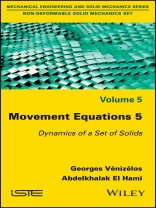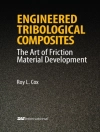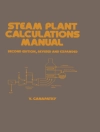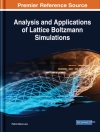The final volume in the Non-deformable Solid Mechanics set, Movement Equations 5 deals with the dynamics of sets of solids. This volume provides the appropriate mathematical tools (torsor calculus and matrix calculus) to obtain and solve the equations of motion for a chain of solids. These equations are then used to acquire the information necessary for the design of mechanical systems.
Also examined are the vibratory behavior of continuous (deformable) systems, rigid and deformable solids, and sets of several solids. The book concludes with a study of the response of an excited system as a function of the excitation frequency.
Accompanied by detailed examples, this book is aimed primarily at students, but would also serve as a valuable support for working engineers and teacher-researchers.
Tabela de Conteúdo
Preface ix
Table of Notations xi
Chapter 1. Set of Solids with Neither Loops Nor Branches 1
1.1. Identifying a chain of solids with neither loops nor branches 1
1.2. Applying the fundamental principles of mechanics 2
1.2.1. Principle of effort generators 3
1.2.2. Principle of effort receivers 4
1.2.3. Applying the fundamental principle of dynamics 4
1.2.4. Theorem of mutual actions 7
1.2.5. Summary of equations obtained 8
1.3. Study of the movement of a chain of solids (case of three solids) 8
1.3.1. Applying the fundamental principle of dynamics 8
1.3.2. Solidifying parameters 9
1.3.3. Movement equations 11
1.3.4. Determining the link unknowns 18
1.4. Links between solids 18
1.4.1. Link associated with the point contact of two solids 18
1.4.2. Link torsor associated with the line contact of two solids 25
1.4.3. Link torsor associated with the surface contact of two solids 28
1.4.4. Fundamental links between two solids in contact 32
Chapter 2. Vibration Mechanics of Systems of Solids 35
2.1. Movement equations of a set of solids 35
2.1.1. Configuring and situating a set of solids in a Galilean frame 35
2.1.2. Velocity distributors of n solids 37
2.1.3. Torsors associated with loads and efforts 38
2.1.4. General equation of dynamics derived from the fundamental principle 39
2.1.5. Applying analytical mechanics of movement 39
2.2. Linear oscillatory systems with n solids 42
2.2.1. Setting the problem as an equation 42
2.2.2. Equilibrium of a set of n solids 46
2.2.3. Oscillations of a set of n solids 47
2.2.4. Vibration eigen modes of a set of n solids 48
2.2.5. Influence of the initial conditions of the problem 53
2.3. Studying the vibrations of a continuous set by passing to the limit 54
2.3.1. Taking the boundary conditions into account at any instant 59
2.4. Exercises 62
2.4.1. Exercise 1: movement equations – equilibrium 62
2.4.2. Exercise 2: movement around an equilibrium position 75
2.4.3. Exercise 3: dynamics of an RTT robot (one rotation + two translations) 85
Chapter 3. Vibrations with N Degrees of Freedom 97
3.1. Introduction 97
3.2. Homogeneous system – free vibrations (f1 = f2 = 0) 99
3.2.1. Without damping (cij = 0) 99
3.2.2. Solving the system (Sigma) 100
3.2.3. Damped free system 108
3.3. Response on the time domain of an excited system 112
3.4. Exercises 113
3.4.1. Exercise 1: eigen modes of a system with 2 DOF 113
3.4.2. Exercise 2: free and forced oscillations of a conservative 2-DOF system 118
3.4.3. Exercise 3: calculation/test correlation 125
3.4.4. Exercise 4: damped system with a single excited mode 128
3.4.5. Exercise 5: system excited by the base 137
Chapter 4. Modal Analysis of N Degrees of Freedom 145
4.1. Introduction 145
4.1.1. Normal modes 145
4.2. Response in the frequency domain of a conservative structure subjected to a harmonic excitation 146
4.3. Response of a structure with proportional viscous damping to a harmonic excitation 150
4.4. Frequency response of a structure with proportional hysteretic damping 153
4.5. Exercises 155
4.5.1. Exercise 1: receptance matrix of a conservative structure 155
4.5.2. Exercise 2: receptance matrix of a structure with proportional viscous damping 164
4.5.3. Exercise 3: case of a non-diagonal mass matrix 170
References 177
Index 179
Sobre o autor
Georges Venizelos is a former Professor at the Conservatoire National des Arts et Metiers (CNAM), Paris, France, where he occupied the chair of mechanical systems design. Over his 35-year career at CNAM, he taught extensively and pursued research in the fields of solid mechanics and structural vibration.
Abdelkhalak El Hami is Full Professor at INSA Rouen Normandy, France. He is the Director of the Department of Mechanics and responsible for the Chair of Mechanics at CNAM in Normandy, as well as several European educational projects.












